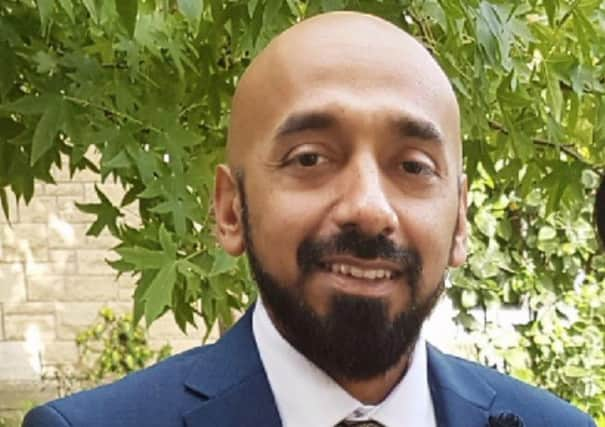Digital map will save lives of vulnerable in emergency


The Persons at Risk Database (PARD), created by Avais Ijaz of Falkirk Council, enables almost immediate identification of people at risk in the event of fires, floods, power cuts or other emergencies.
Ijaz, a systems development officer with his local authority, came up with the model after he realised that it could take several hours for emergency services to identify vulnerable people when a major incident occurs.
Advertisement
Hide AdAdvertisement
Hide AdIjaz became aware of the potential for delay when he attended a debrief with emergency services following a gas leak in a nearby council area a few years ago.
Back then emergency services and council workers had to print off databases to locate those who needed to be evacuated, a process that took several hours.
Since then Ijaz has worked on creating a system to replace paper files with a system that sources data from the council and NHS Forth Valley.
A computerised matrix can carry out quick and complex analysis on map-based data and can be accessed by council staff 24 hours a day from any location.
It has reduced the time spent identifying vulnerable persons to a few minutes at most and ensures the council can quickly identify the number of vulnerable people living near a major incident or living in high-rise tower blocks.
The system has particular relevance in the wake of the Grenfell Tower fire tragedy, which saw 72 deaths and confusion over who was actually in the building.
The system has just won an Alarm 2018 Risk Award for organisations that have worked in partnership to mitigate risk. It has been picked up by the Scottish Government, which has paid tribute to the Falkirk team for its help in developing a Scotland-wide system.
Ijaz, who is a member of the Falkirk Muslim Forum, said: “Instead of having a database where you have to print off a list of people on it and where they live when there’s something like a gas leak or you have to evacuate a certain part of the council area, we now have a system that you can turn on and you instantly know who might be in a wheelchair in an area and which people have been classed as vulnerable.
Advertisement
Hide AdAdvertisement
Hide Ad“It can locate people who might have mental health issues, or a physical or mental impairment. We can find out instantly, for example, where the nearest residential home is that might have 80 per cent of residents who need help to be evacuated.”
After developing the system, the Falkirk team spoke to Forth Valley NHS and they began working together and sharing NHS data securely.
“That’s another layer of data intelligence that we have,” said Ijaz. “That was then highlighted to the Scottish Government, who have come and seen what we have done and decided that what we have got is effectively what other councils should be doing. Grenfell is still in a lot of people’s minds. The Scottish Government is now working with councils and the NHS to replicate what we are doing. So it has been picked up as the preferred model.”
He added: “There are limitless benefits of taking data and placing it on an electronic map and using it to target resources and work efficiently, especially in times of crisis and tighter finances. Being able to tap into local intelligence and quickly share it with health and emergency services illustrates how simple workable solutions can reap the greatest reward.
A Scottish Government spokesperson said: “It is very doubtful if a national system could have been developed without the work, support and assistance of the Falkirk team.”